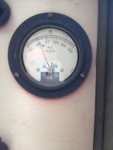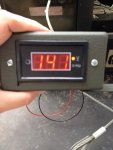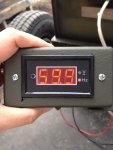I made some suggestions to 445gsdss and then suggested he post here because someone will likely think of something that I didn't. Just to let you know what I've already suggested, here is my reply:
Calvin,
High, uncontrollable voltage is a sign that something in the regulator circuit is not working. The voltage is controlled by applying current through a set of control windings in CVT1, which is a large transformer assembly in the cabinet under the output lugs. The regulator controls this current, but it passes through many terminals and connectors, and if any of these is not making good contact, the output will be high. Control current is supplied by T1, and if that transformer is bad, control current won't be supplied. Output voltage is sampled by T2, and if that one is bad, the regulator will think the output is low and cut its control output, causing high voltage from the generator.
All of these parts are shown in the large schematic on or near page 39 of TM5-6115-585-34. As you can see, there are many parts that could be causing the high output voltage. Fortunately, they aren't hard to check with a meter to see if they're doing what they're supposed to. I recommend following the troubleshooting information in the TM and go from there.
Not getting output at L1-L3 does point to something like a bad breaker or a dirty reconnect switch, or even a loose screw terminal. Seeing 30v on non-connected terminals is likely to be just stray voltage that would quickly drop to zero if any load were applied. An old analog meter may not even see that voltage.
Your regulator may well not be the problem, but it is repairable if it is. That is labor intensive. I've seen prices posted on the board like $200 to repair and test a board, quoted from companies that specialize in that sort of thing. I don't repair them because I'd rather provide a new, guaranteed regulator with better components for $179 than charge someone $200 to repair an original board. The schematic to the board is on or near page 90 in that same TM, and the complete parts list is in TM5-6115-585-24P, so you could make it a project to see if you can fix it if you're so inclined. On the other hand, Q3 is a common failure, and can be cheaply replaced, so you could try that without a lot of cost or effort.
I may have missed something, so you'd do well to keep your thread going to see if someone else suggests something that I didn't think of.
Jim








